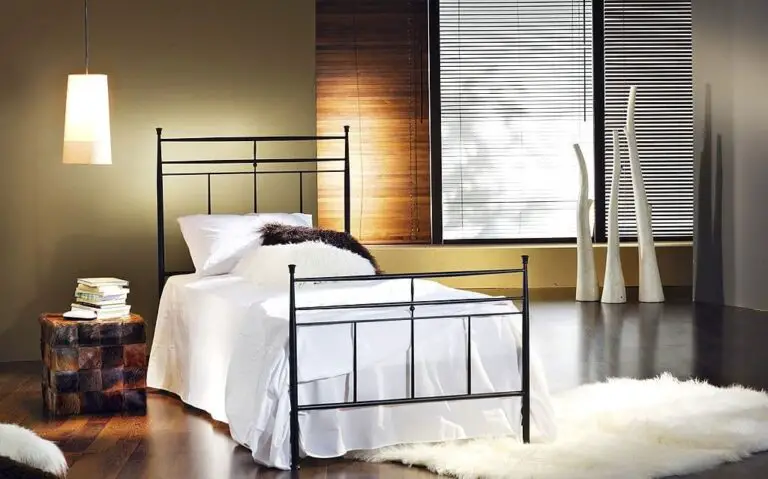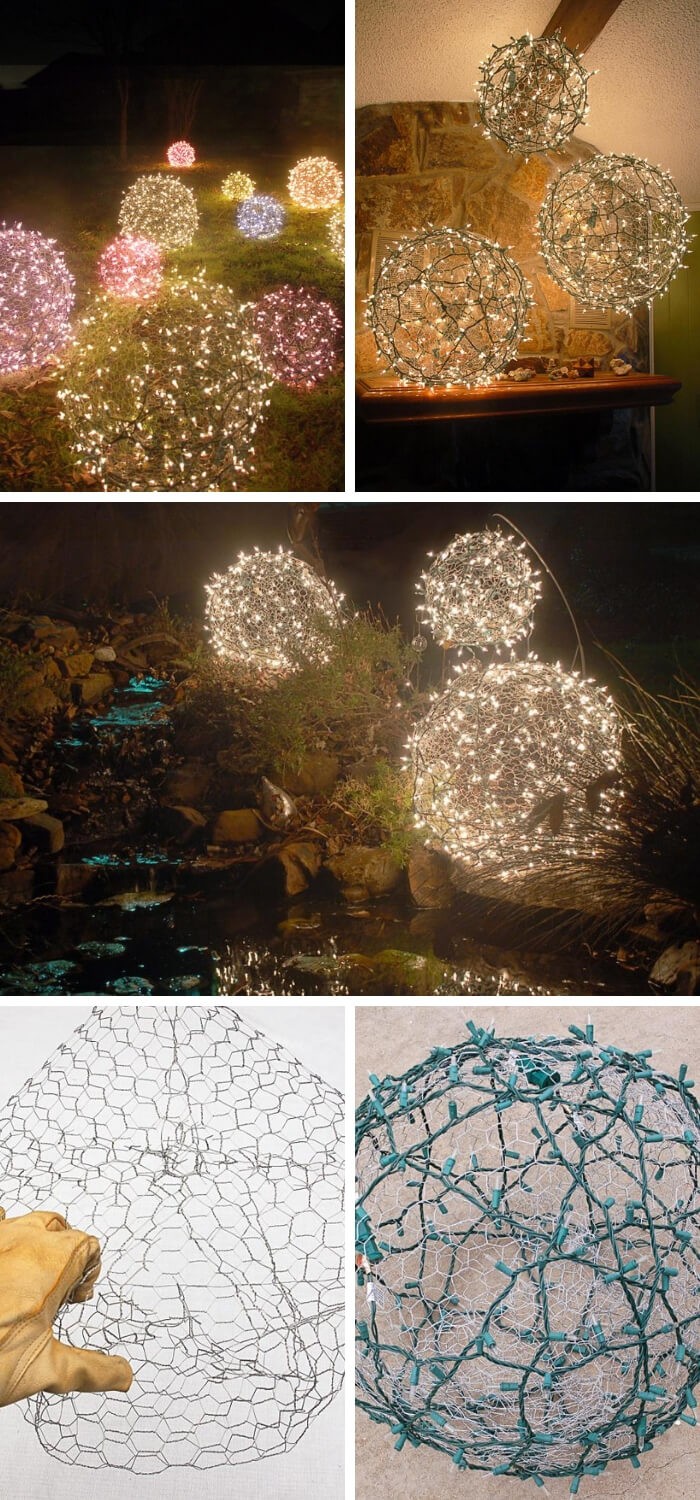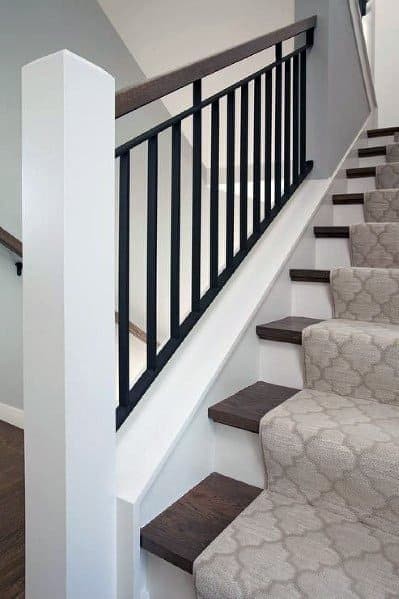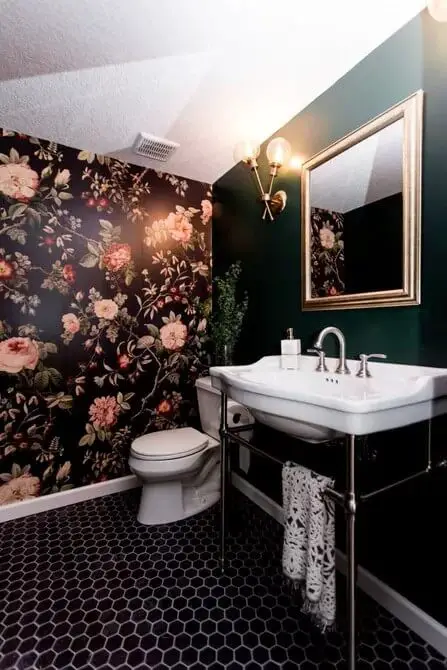20+ Best Basement Flooring Ideas That Will Up Your Homes Value
If you’re looking to boost your home’s value by updating its basement, you’ve landed on the right page! In this article, we’ll delve into 20 unique and effective basement flooring ideas that cater to various tastes and preferences. From waterproof options to rustic designs, we’ll explore the pros and cons of each type of flooring to help you make an informed decision for your home. Whether you’re looking to create a cozy family room or a state-of-the-art gym, we’ve got you covered!
Our comprehensive list includes epoxy, vinyl, tile, bar, bathroom, bedroom, kitchen, stairs, concrete, and more. We’ll also touch on the benefits of using concrete floors in your basement and answer common questions like what’s the cheapest flooring option, what’s the warmest, and what color works best for a basement floor. Furthermore, we’ll identify which types of flooring aren’t recommended for basements. So, without further ado, let’s get started!
Basement flooring ideas over concrete.
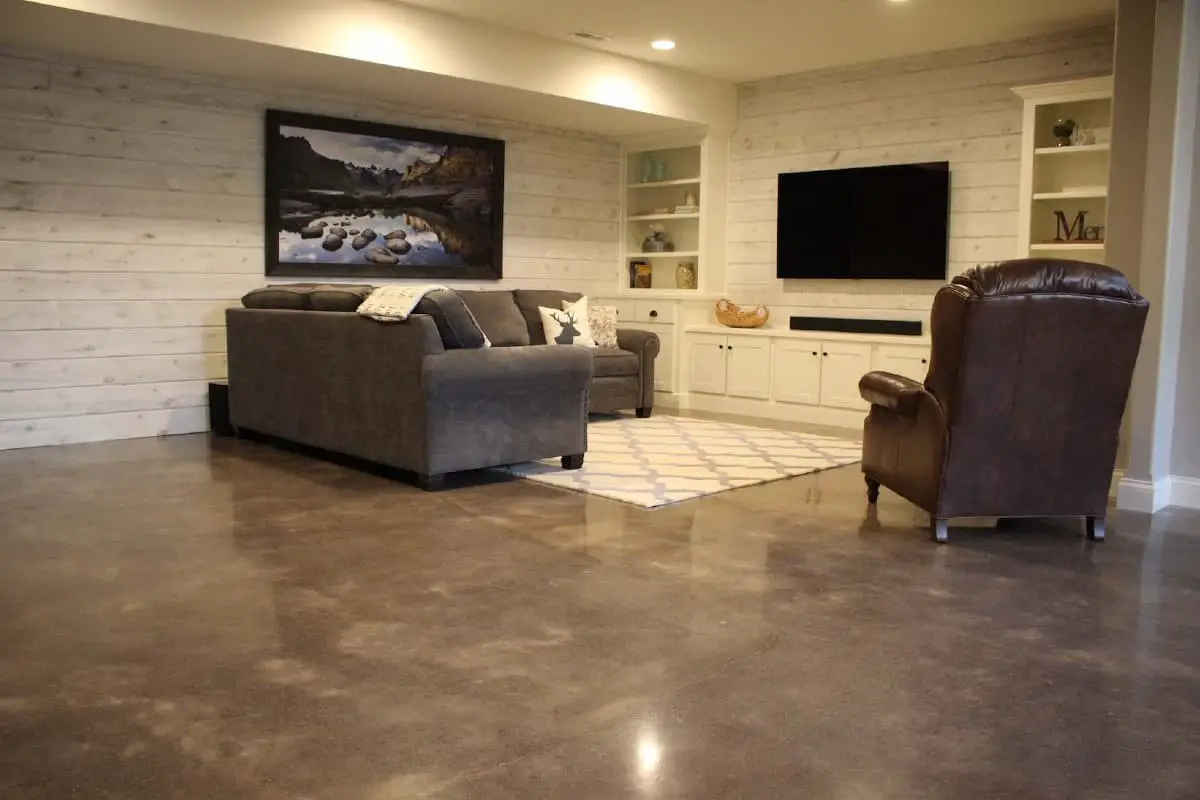
While many homeowners opt for installing basement flooring over concrete to enhance their space’s aesthetic and functionality, it’s crucial to select the right material that caters to their specific needs. The array of options available can make this decision overwhelming. For instance, carpeting is a popular choice due to its affordability and ease of installation. However, it’s essential to consider that carpeting may be prone to mold and mildew if exposed to moisture.
Tile flooring, on the other hand, offers durability and ease of cleaning, making it an excellent option for areas that may encounter water. Although tile can be cold and unforgiving underfoot, its benefits make it a worthwhile consideration. Wood flooring is another popular choice, providing an attractive and value-adding feature to a home. However, its susceptibility to water damage necessitates the selection of moisture-resistant types.
Lastly, concrete is a low-maintenance option that can be painted or stained to match one’s decorating scheme. Although it may be a cold surface, its durability makes it a viable choice for certain rooms.
Waterproof basement flooring ideas.
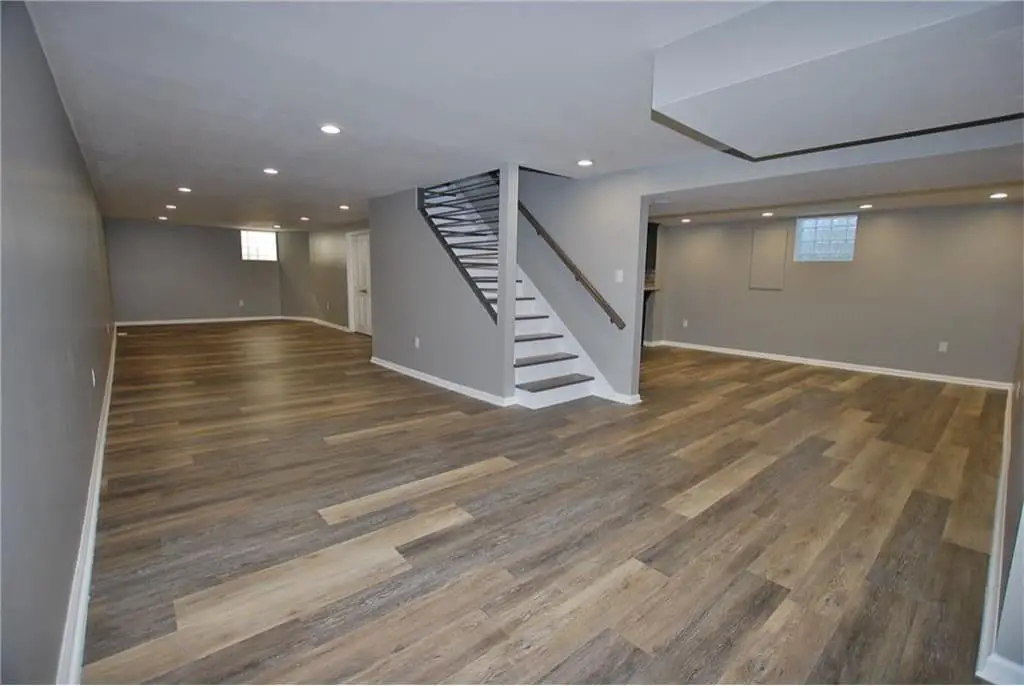
When it comes to waterproofing your basement floor, you’re presented with several options to choose from. Sealants, waterproof paints, and waterproof floor coverings are all viable solutions to consider. Sealants work by creating a barrier between the concrete and water, preventing seepage through cracks and crevices while also repelling any water that manages to get through.
Waterproof paints operate similarly, forming a barrier between the concrete and water to prevent seepage and repel any remaining moisture. For a more permanent solution, you may want to consider installing a waterproof floor covering. Sub-floor drainage systems are one type of covering that collects and directs away any water that seeps through cracks in the concrete.
Epoxy coatings are another option, creating a barrier between the concrete and water to prevent seepage and repel remaining moisture. If aesthetics is a priority, tile flooring can be an attractive solution for waterproofing your basement floor. Available in various colors and styles, tile flooring offers a range of design possibilities while providing a durable, water-resistant surface.
Finished basement flooring ideas.
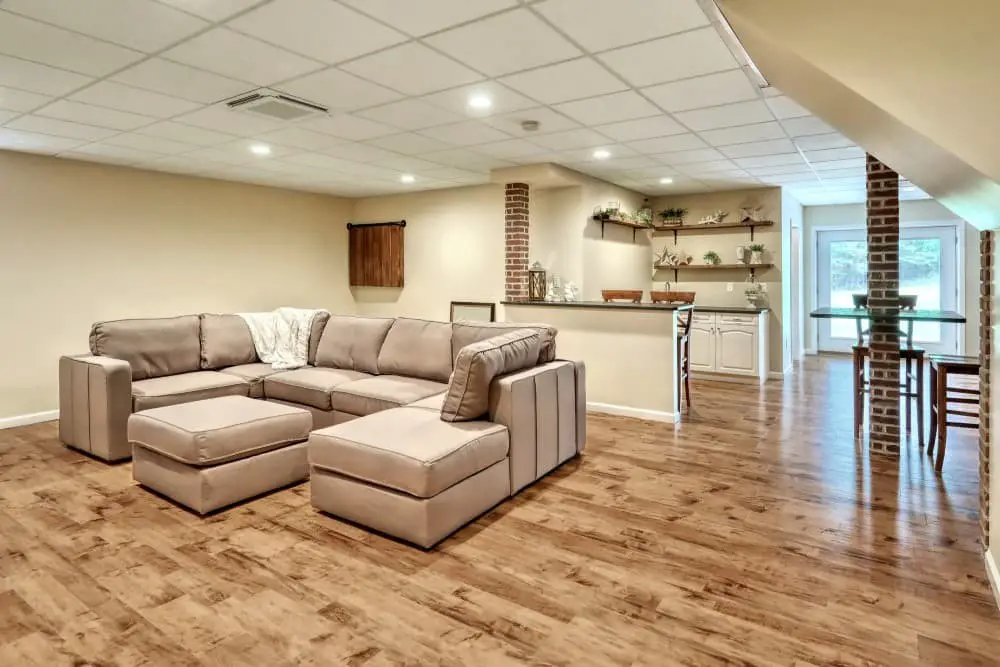
When considering flooring options for your basement, you’re presented with a multitude of choices. Carpet, hardwood, laminate, tile, and vinyl each offer unique advantages and disadvantages. It’s essential to thoroughly evaluate these pros and cons before making a decision that suits your needs. Carpet is a sought-after option due to its affordability and ability to maintain warmth in the space. However, it can be challenging to clean and may not be the most durable choice.
Hardwood floors are another popular selection for basements. They exude elegance and ease of maintenance, but their cost can be a significant consideration. Laminate flooring presents a budget-friendly alternative that can mimic the appearance of hardwood or tile. It’s also simple to care for and resistant to stains and scratches. Tile is an excellent choice for areas prone to moisture, such as basements that may experience occasional flooding.
Its ease of cleaning and durability make it an attractive option. Nevertheless, it can be chilly and uncomfortable to walk on barefoot. Vinyl flooring stands out as the most budget-conscious option, available in a wide range of colors and styles. Installation and maintenance are also relatively straightforward, although its durability falls short compared to other options.
Epoxy basement flooring ideas.
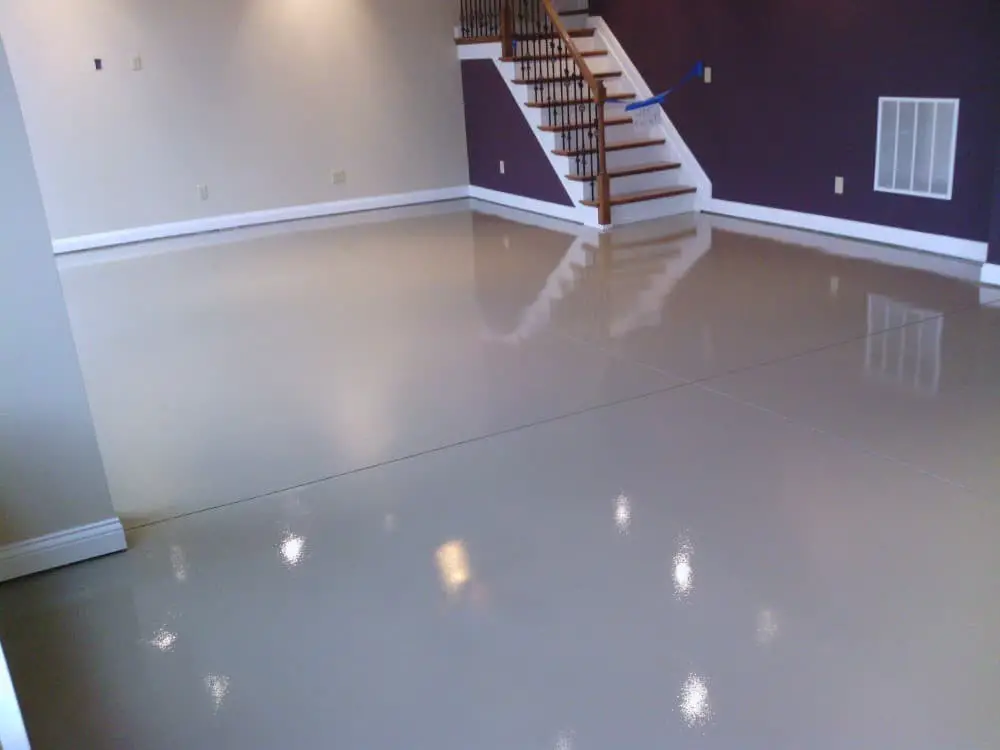
When it comes to basements with concrete floors, many people don’t give them much thought beyond thinking they’re unattractive. However, by incorporating epoxy flooring into your design, you can turn your basement into a stunning and functional space. The durability, ease of cleaning, and resistance to mold and mildew that epoxy flooring offers make it an ideal choice for basements. Before selecting epoxy flooring for your basement, there are a few key factors to consider.
First, ensure the concrete floor is clean, free from dirt and debris, and smooth to guarantee proper adhesion of the epoxy. By taking these steps, you’ll be able to create a strong bond between the two. Once the concrete is prepped, it’s time to mix the epoxy according to the manufacturer’s instructions. Then, apply the mixed epoxy using either a roller or brush, taking care to roll in one direction only when using a roller to avoid creating air bubbles.
After the epoxy has dried, you can add a topcoat if desired. Epoxy flooring offers an excellent way to transform your basement into a beautiful and functional space with minimal effort required. With this simple yet effective solution, you’ll be able to enjoy a floor that not only looks great but is also easy to maintain.
Warm basement flooring ideas.
To revitalize your basement flooring, there are several approaches you can take. One effective method is to incorporate radiant floor heating systems, which utilize hot water or electricity to warm the floor from beneath. This solution can efficiently dispel chilliness in your basement and create a cozy atmosphere. Additionally, installing insulation underneath the floorboards can be a valuable step in retaining heat and transforming your basement into a more inviting space.
If you’re looking for a low-cost, high-impact option, consider introducing area rugs or mats to cover the floor. These simple additions not only keep feet warm but also inject a splash of color and visual interest into the room.
Rustic basement flooring ideas.
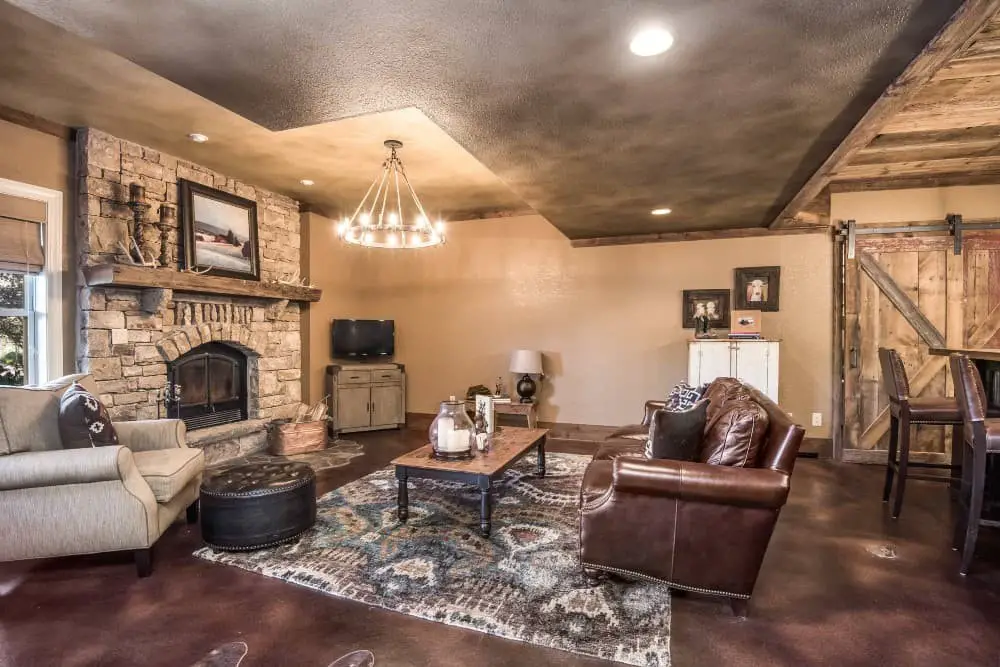
Transforming the lower level of your home into an inviting space is often achieved through the use of rustic basement flooring. This timeless design approach combines durability with ease of maintenance, making it a popular choice among homeowners. For those seeking inspiration, here are some top-notch rustic basement flooring ideas worth exploring.
Stone flooring is a tried-and-true favorite when it comes to rustic basement designs.
Its exceptional durability and low-maintenance nature make it an ideal solution for high-traffic areas like basements. Additionally, stone flooring can add significant character and style to the space, making it a popular choice among homeowners.
Wood flooring is another popular option for those seeking a rustic look in their basement. Not only does wood flooring offer exceptional durability, but it also provides an unparalleled level of warmth and coziness to the space.
Furthermore, wooden floors are incredibly easy to care for, ensuring that your new basement design remains looking its best with minimal effort.
For homeowners seeking a more traditional look, carpet flooring is often the way to go. This classic choice offers unparalleled comfort underfoot, making it an ideal solution for families or individuals who spend a lot of time in their basement.
Carpet is also relatively easy to care for and can add significant warmth to the space, making it a great option for those seeking a cozy atmosphere.
Wet basement flooring ideas.
When it comes to fixing a wet basement floor, there are several approaches you can take. One effective method is to employ a sump pump, which can efficiently remove large amounts of water or water seepage from the ground. For situations where the moisture levels are more moderate, a dehumidifier can be a valuable asset in reducing humidity and creating a more livable space.
On the other hand, if the water accumulation is relatively minimal, a wet/dry vacuum can prove to be a convenient solution for those who prefer not to utilize pumps or dehumidifiers. Additionally, installing a fan can also help circulate air and accelerate the drying process, making it an attractive option for basements with limited space.
Basement vinyl flooring ideas.
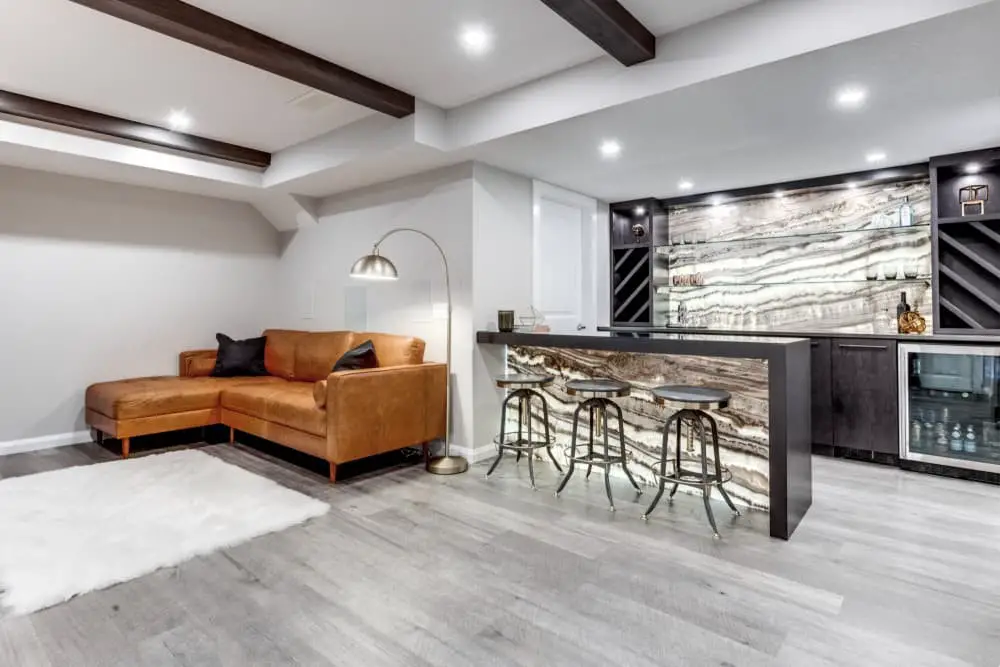
When it comes to finishing your basement, vinyl flooring is an excellent choice. Its durability, ease of cleaning, and varied styles and colors make it a practical option. Moreover, it’s budget-friendly, making it an attractive solution for homeowners. Before selecting vinyl flooring for your basement, consider the type that suits you best. You can opt for sheet vinyl or tile.
Sheet vinyl is a single piece of vinyl that covers the entire floor, while tile is individual pieces installed like traditional tile. Next, choose a style and color that complements your space. Vinyl flooring comes in a wide range of wood-looks, stone-looks, and solid colors, offering plenty of options to match your desired aesthetic. Finally, decide whether you’ll install the vinyl flooring yourself or hire a professional.
If you’re handy and have experience with home improvement projects, you might be able to tackle the installation. However, if you lack confidence in your DIY skills, it’s best to hire a professional to ensure a successful outcome. Once you’ve decided on the type, style, and color of vinyl flooring, the next step is to install it. If you’re working with sheet vinyl, measure and cut the vinyl to fit your space.
For tile installations, lay out the vinyl tiles in the desired pattern and secure them using glue or tape. After installation, finish the look with trim pieces around the edges for a polished appearance.
Basement gym flooring ideas.
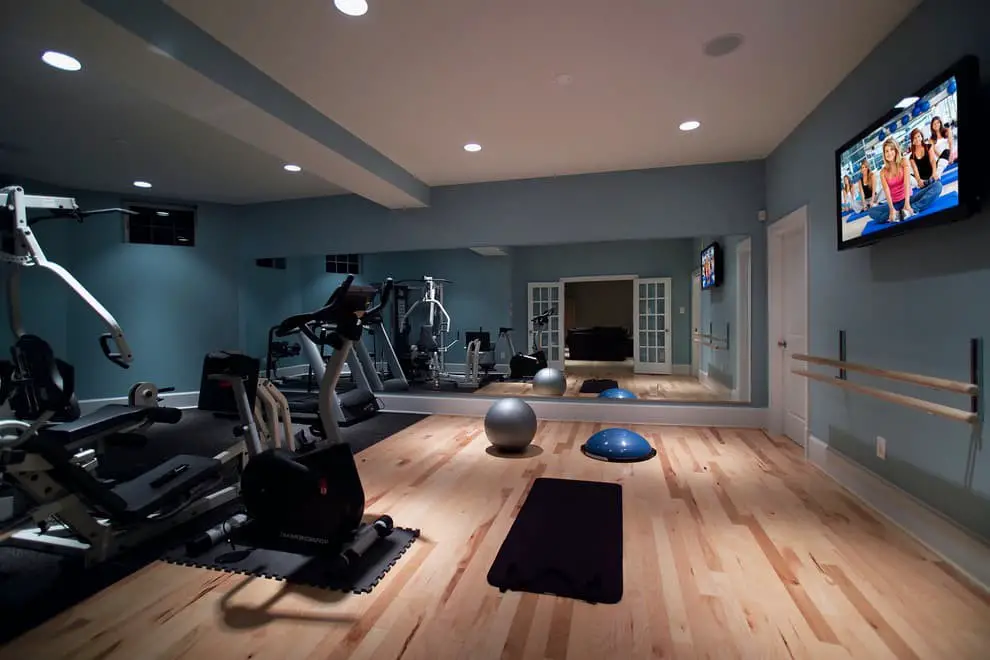
When selecting the perfect flooring for your basement gym, several factors come into play. First and foremost, you’ll want to consider durability, as your chosen material will need to withstand regular use without showing signs of wear. Next, ensure that the flooring is slip-resistant to prevent accidents from occurring. Lastly, think about how the material can contribute to a comfortable and cool environment for your workouts.
In terms of practical options, rubber flooring stands out for its ease of cleaning and durability, making it an excellent choice for busy gyms. Alternatively, interlocking foam tiles provide a softer surface, ideal for those who prioritize comfort during their workouts. For a more budget-friendly approach, vinyl flooring offers a professional look without breaking the bank.
Basement tile flooring ideas.
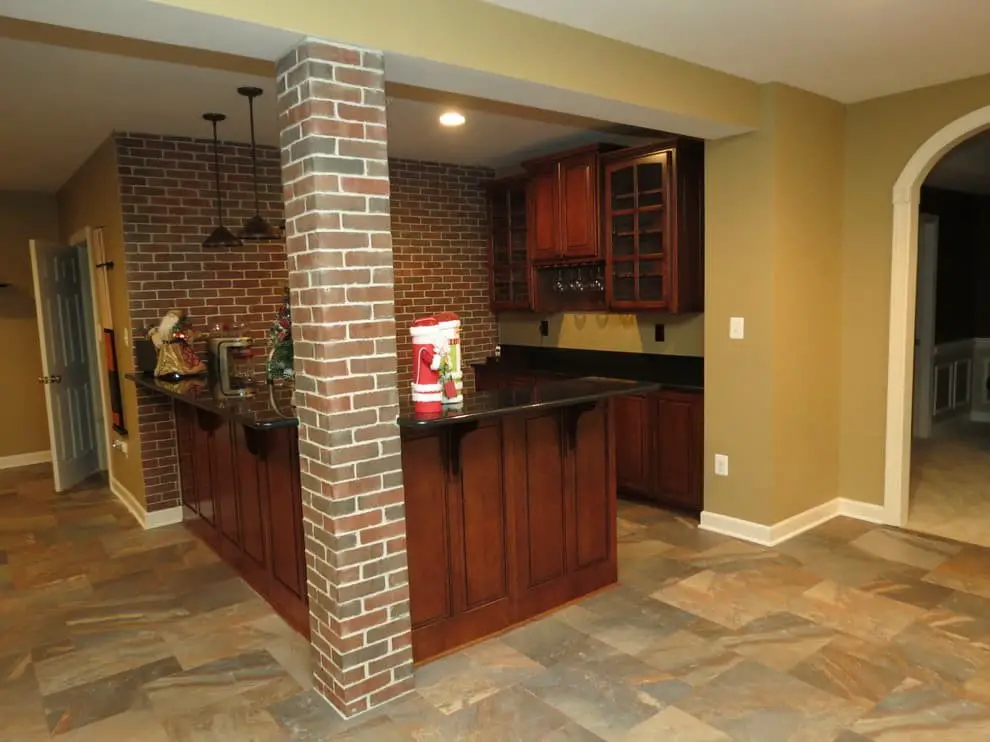
When it comes to choosing the perfect basement tile flooring, there’s no one-size-fits-all solution. The key is to consider the overall aesthetic you want to achieve in your basement. Do you envision a timeless classic look or something more modern and sleek? This will help guide your decision-making process. For a traditional look, classic tile options like ceramic, stone, or marble are always a good choice. These materials exude a sense of sophistication and will never go out of style.
If you’re aiming for a more contemporary feel, glass tile is an excellent option. Its sleek, modern appearance makes it a popular choice among homeowners looking to create a cutting-edge look in their basements. Laminate flooring is another great option if you want the look of real wood without the maintenance hassles that come with it. This durable and low-maintenance material is perfect for busy families or those who want a hassle-free living space.
Lastly, don’t overlook vinyl tile flooring as an affordable and practical solution. Its ease of maintenance and durability make it an excellent choice for homeowners on a budget.
Basement bar flooring ideas.
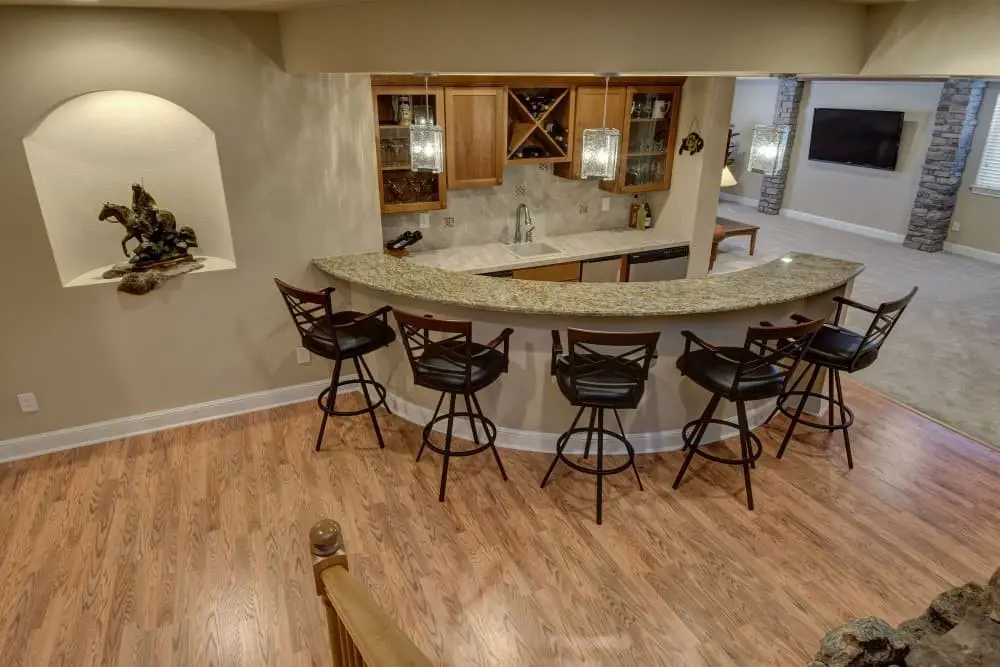
When selecting the perfect flooring for your basement bar, several factors come into play. Durability is a crucial consideration, especially if you anticipate a high volume of foot traffic. In such cases, tile or concrete are excellent choices that can withstand wear and tear. On the other hand, if you’re aiming to create a cozy atmosphere, carpet or hardwood may be more suitable. The style of your bar also plays a significant role in this decision.
Modern designs often pair well with concrete or tile, while traditional settings might benefit from carpet or hardwood. Lastly, budget is an essential aspect to consider. Some materials like tile and concrete can be costly, whereas others like carpet and hardwood are more affordable. Ultimately, the choice of flooring material will depend on your budgetary constraints and personal preferences.
Basement bathroom flooring ideas.
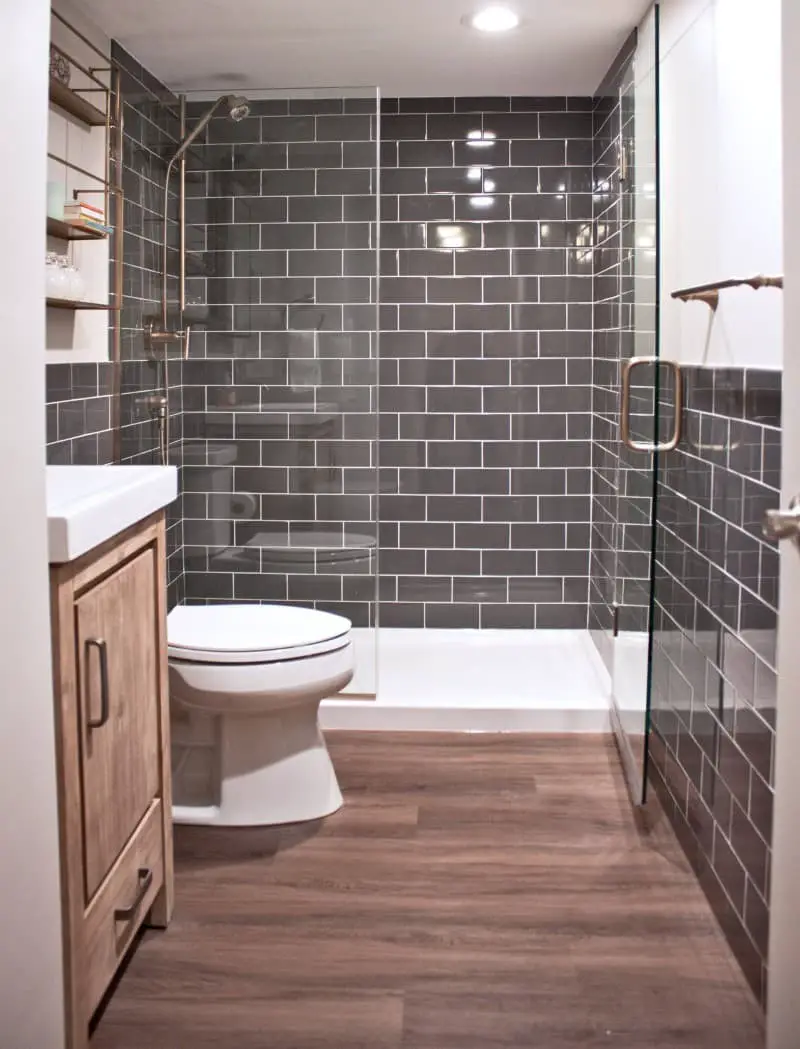
When selecting the perfect flooring for your basement bathroom, several factors come into play. One crucial consideration is whether you desire a waterproof floor. Waterproof options, such as those featuring epoxy or urethane coatings, are ideal for bathrooms due to their resistance to moisture and mildew. While they may be more expensive than non-waterproof alternatives, they provide the added assurance of durability in high-humidity environments.
For those on a budget, vinyl flooring can be an excellent choice. Not only is it waterproof, but its durability ensures it will withstand the rigors of daily use. However, it’s worth noting that vinyl floors can feel cold to the touch and may not provide the same level of comfort as other options when walking barefoot.
Tile, too, is a popular choice for basement bathrooms. Its water-resistance makes cleanup a breeze, while its durability ensures it will withstand the test of time.
However, tile’s hardness can make it cold to walk on, and its lack of give may be uncomfortable for those preferring softer surfaces.
Finally, carpet is another option worth considering. Soft and inviting, carpet provides unparalleled comfort underfoot. While it may present challenges in terms of maintenance – keeping the space clean can be a challenge – many find the benefits outweigh the drawbacks.
Basement bedroom flooring ideas.
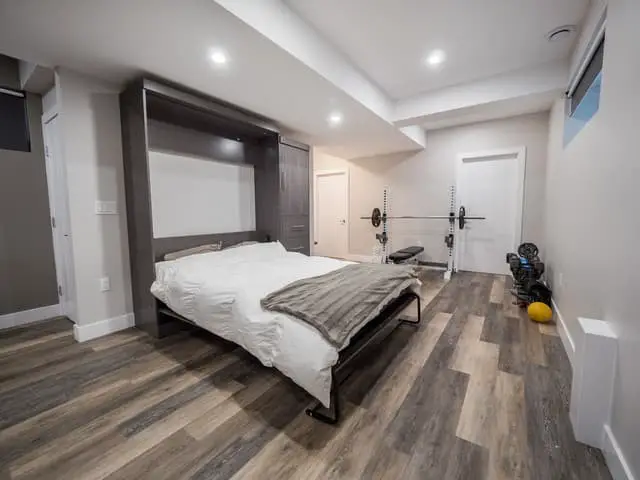
When it comes to finishing your basement bedroom, the right flooring can make all the difference. While there are many options available, not all of them are suitable for a basement environment. To ensure a comfortable and functional space, consider the following top picks for basement bedroom flooring: Carpet is an excellent choice due to its softness and ability to insulate against noise and temperature fluctuations. Its comfort factor makes it ideal for a bedroom.
Laminate flooring offers durability and ease of cleaning, making it a practical option for basements. Its resistance to moisture and scratches also adds to its appeal. Vinyl flooring is another great choice, boasting durability, easy maintenance, and moisture resistance. These features make it an excellent fit for basement bedrooms where humidity can be a concern.
Basement kitchen flooring ideas.
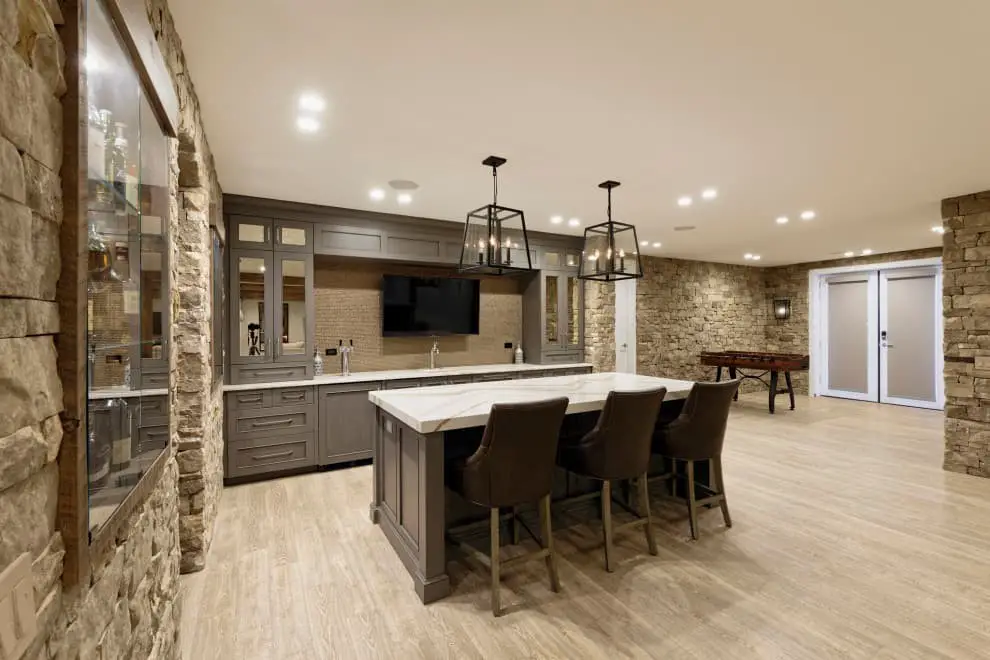
When it comes to choosing the perfect flooring for your basement kitchen, you’re spoiled for choice. From traditional looks to modern designs, there’s something to suit every taste and style. And with so many materials to choose from, you can find a solution that perfectly complements your space.
Tile is a top pick for many homeowners, thanks to its ease of cleaning and maintenance. It’s also a durable option that can withstand the rigors of everyday use.
With such a wide range of colors and styles on offer, you’re sure to find a tile that fits your vision.
For those looking for an economical solution, linoleum is another popular choice. Its ease of installation makes it a breeze to get up and running, while its variety of colors and patterns ensures there’s something for everyone.
And then there’s carpet – the ultimate in comfort and luxury for your basement kitchen.
Not only does it provide a warm and welcoming feel, but it’s also easy to clean and maintain. Whether you’re looking for a soft underfoot or a stylish statement piece, carpet has got you covered.
Basement stairs flooring ideas.
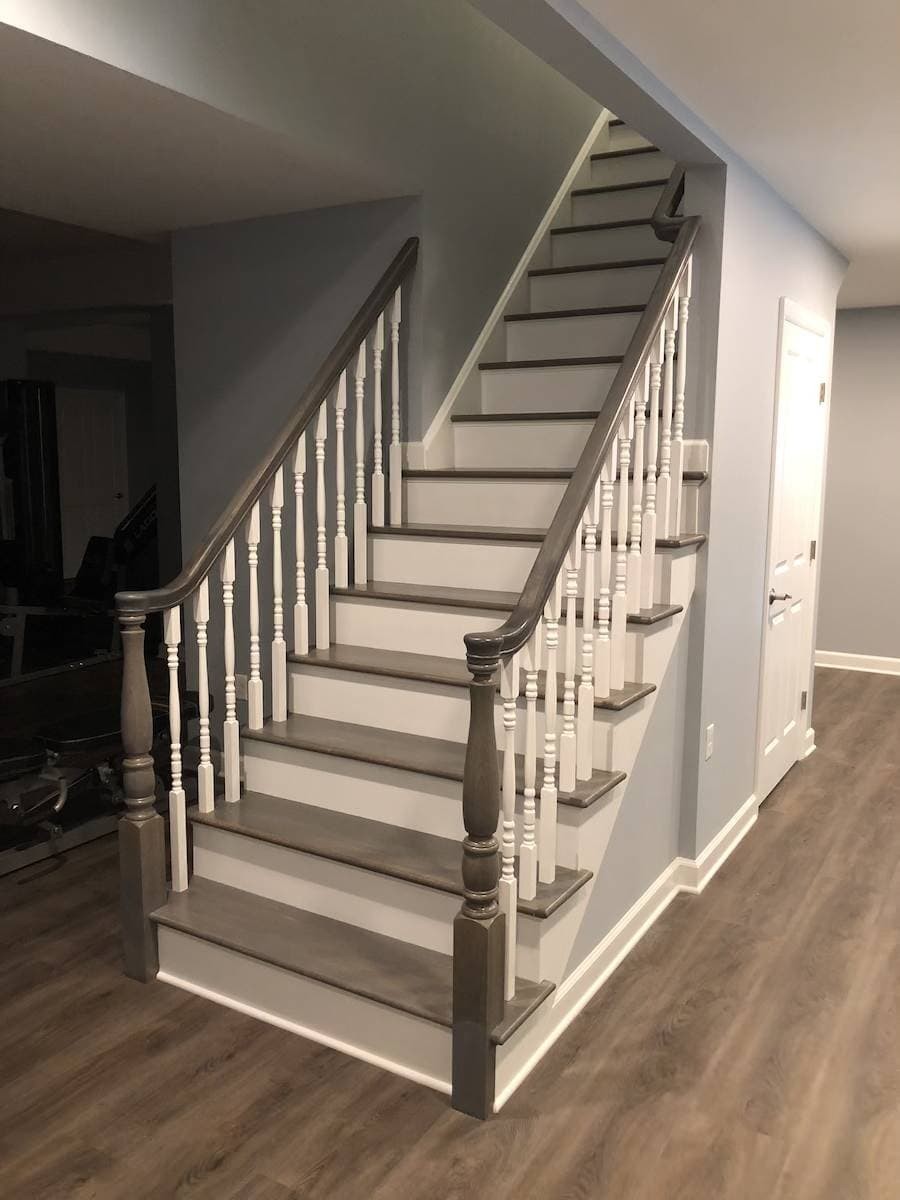
When considering alternative options to traditional carpet or hardwood for your basement stairs, there are several unique flooring ideas worth exploring. Tile, laminate, and even concrete can be excellent choices, each offering its own set of benefits and design possibilities. For instance, tile is a practical option due to its durability and ease of cleaning, with various color and pattern options available to suit your interior design style.
Laminate flooring, on the other hand, provides an easy installation process and a range of colors and styles to select from. Concrete, meanwhile, offers a robust and long-lasting solution that can be customised through staining or painting to harmonise with your overall aesthetic.
Basement concrete flooring ideas.
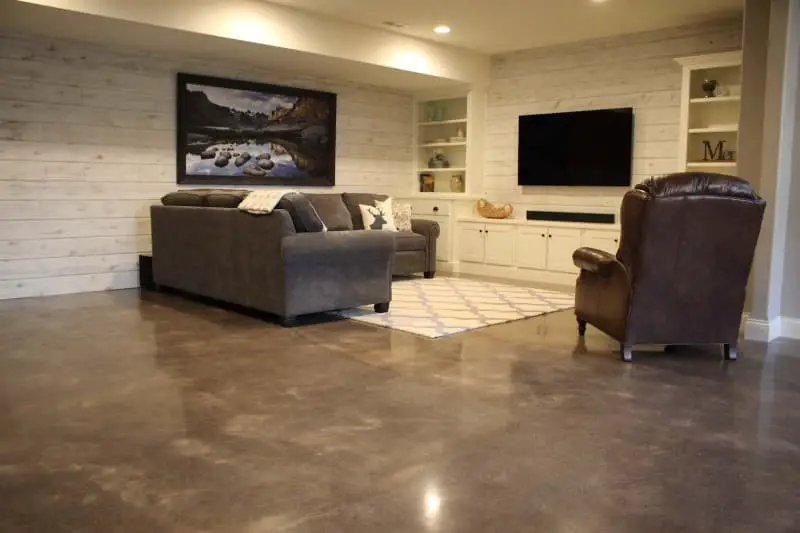
Adding a concrete floor to your basement is a fantastic way to create additional living space in your home. This flooring solution not only provides an abundance of square footage but also boasts impressive durability and low maintenance requirements. As you consider various flooring options for your basement, the benefits that concrete floors offer are truly unmatched by other choices.
Benefits of Concrete Floors for Your Basement
With proper care, concrete floors can withstand the test of time, boasting a lifespan that spans many years. Their low-maintenance nature also makes them a breeze to clean, eliminating the hassle associated with other flooring options. Furthermore, their inherent resistance to mold and mildew renders them an excellent choice for basements prone to dampness.
In addition to these practical benefits, concrete floors offer a unique opportunity for customization.
By staining, dyeing, or painting the floor, homeowners can create a distinct look that harmonizes with their home’s style, allowing for seamless integration into any décor.
For those plagued by allergies, concrete floors present a welcome respite. Unlike carpeted floors, which collect dust and allergens, concrete remains allergen-free, providing a healthier environment within the confines of your home.
Basement family room flooring ideas.
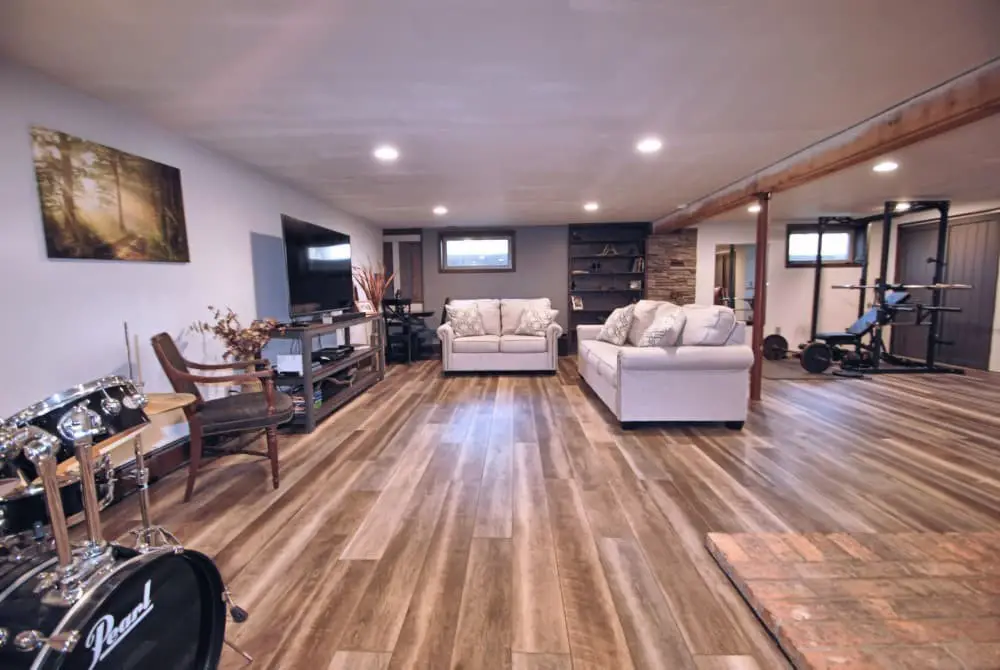
When it comes to selecting the perfect flooring for your basement family room, there are numerous options to consider. Carpet remains a top pick due to its affordability and cozy ambiance, which makes it ideal for relaxation. Nonetheless, carpeting can be challenging to maintain, particularly in households with young children or pets. Hardwood floors offer an alternative, allowing for easy sealing to safeguard against moisture damage.
For those seeking low-maintenance options, tile or linoleum flooring are excellent choices. Regardless of the type you select, ensure it is resilient and capable of handling heavy foot traffic.
What kind of flooring is best for a basement?
When it comes to selecting the perfect flooring for a basement, there are several key factors to consider. Firstly, the flooring should be durable enough to withstand the wear and tear of daily use, while also being easy to clean in case spills or accidents occur. Additionally, the flooring must be able to effectively resist moisture, as basements can be prone to dampness and humidity.
With these requirements in mind, some of the most suitable options for basement flooring include tile, concrete, and linoleum. These materials are not only durable but also resistant to water damage, making them ideal for areas where moisture is a concern. In contrast, carpeting is generally not recommended for basements due to its tendency to trap moisture and create an environment conducive to mold growth.
What type of flooring is best over concrete?
While several flooring options can be installed over concrete, not all types are equally well-suited to this surface. Laminate, linoleum, vinyl, and hardwood are a few examples of flooring that can be laid over concrete, but some materials may perform better than others depending on the specific circumstances.
Laminate Flooring
With its durability and low maintenance requirements, laminate flooring has become a sought-after option among homeowners. Moreover, the fact that it can be installed directly onto concrete without the need for nails or adhesives makes it an ideal choice for those looking to avoid damaging their subfloor. This unique characteristic allows homeowners to enjoy the benefits of laminate flooring while also preserving the integrity of their concrete foundation.
Linoleum Flooring
When considering the best options for covering concrete floors, linoleum is a great choice that offers several benefits. This type of flooring is made from natural materials, making it an eco-friendly option for those looking to reduce their environmental footprint. Additionally, linoleum is relatively low-maintenance and easy to clean, as its smooth surface and resistance to moisture make it simple to wipe down and keep free of dirt and debris.
Vinyl Flooring
For those looking for a dependable and low-maintenance option, vinyl flooring is an excellent choice. Its durability, ease of installation, and upkeep make it a popular selection among homeowners. Additionally, vinyl flooring proves to be a wise decision when dealing with concrete subfloors, as it can be installed without the need for nails or adhesives that may compromise the integrity of the concrete.
Hardwood Flooring
Classic hardwood flooring options are a staple in many homes, boasting both aesthetic appeal and increased property value. While the allure of hardwood is undeniable, it’s essential to note that these floors are not impervious to moisture damage, making them less than ideal for applications involving concrete foundations.
What is the cheapest flooring to put in a basement?
When selecting the most budget-friendly flooring option for your basement, there are several choices to consider. One approach is to opt for a concrete floor painted with a durable finish. This cost-effective solution not only provides a wear-resistant surface but also requires minimal maintenance. Alternatively, you could install carpet tiles, which offer an array of colors and patterns to suit your taste. Their ease of installation makes them a practical choice for basement floors.
Lastly, vinyl flooring is another popular option for basements due to its durability and effortless cleanability.
What is the warmest flooring for a basement?
When it comes to selecting flooring for your basement, there are several options to consider. While carpet may seem like an appealing choice, it’s not the best option due to its tendency to hold moisture and foster mold growth. Instead, tile, concrete, or luxury vinyl plank are all excellent choices that can help keep your basement warm and cozy. One of the key benefits of these flooring materials is their durability and ease of cleaning.
Tile and concrete are both great options for this reason, as they can withstand heavy foot traffic and require minimal maintenance. Luxury vinyl plank, on the other hand, offers a unique advantage – it has the look of real wood but is more water-resistant than traditional hardwood, making it an ideal choice for basements that may be prone to moisture issues.
What is the best color for basement floor?
When it comes to choosing the perfect color for your basement floor, personal taste and the overall aesthetic of your home are crucial considerations. For those who crave a brighter, more uplifting space, light hues such as white or cream can create a warm and inviting atmosphere. On the other hand, a modern and sleek look can be achieved by opting for darker colors like black or charcoal, which provide depth and contrast.
Alternatively, mid-tones like grey or beige offer a harmonious balance between light and dark, making them an excellent middle ground option. Ultimately, the choice of color is yours to make, and it’s essential to select one that reflects your personal style and complements the surrounding decor.
What flooring is not recommended for basements?
While certain types of flooring are more suitable for basement environments due to the presence of moisture and humidity, there are a few that should be avoided altogether. Hardwood floors, laminate floors, and carpeting typically fall into this category, as they can be prone to damage from these environmental conditions. In contrast, engineered wood floors may prove a more viable option for basement spaces, offering a durable and low-maintenance solution.
Conclusion
When it comes to selecting the ideal basement flooring option, homeowners are spoiled for choice. With a wide range of styles, materials, and price points available, there’s a solution to suit every taste and budget. Whether you’re seeking a temporary fix or a long-term solution, your perfect match is out there. Take the time to explore the various options and discover the one that best complements your home’s unique character.

